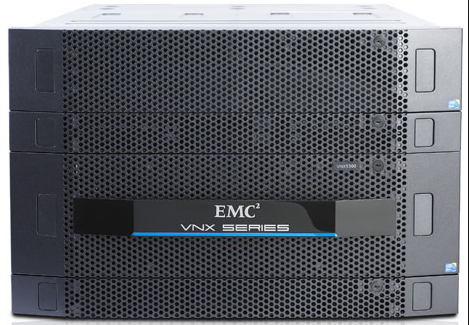Start – Search – iSCSI Initiator
Open It – Discovery
Click on Discover Portal
Add the IP of your Storage – Leave the Default Port
Now Connect to the pairs like a4/b4 and a5/b5 – whichever is assigned
While you Connect make sure you give a Check on “Enable Multi-path”
Now iSCSI connector is ready on the Windows Server 2012 R2.
—
Now login to VNX
Click on Hosts – Initiators
Search for the initiators machine name from where you connected
Now Choose one of the initiators and click on register
Choose Initiator Type – CLARiiON/VNX
Enter the new host name and IP address
Click on ok
Now do the Same process of registering the initiator record for all the other ones.
Now host should be listing in the host list . if its not listing refresh the host list . You can logout and login to refresh it in worst case
Creating LUN –
Now Click on Hosts – LUNS
Click on Create – In the bottom
Enter the User capacity you required – am just adding a witness storage for hyper v cluster so making it a 2 GB drive
Click on Name – Type the LUN Name
Click on the advanced TAB
Choose default owner –SPB – (Its my case )
Click on Apply now LUN is ready
—
Creating Storage Group
Hosts – Storage Groups
Click on Create Storage Group – Enter a friendly name
Now Choose Yes
Now Choose the LUN we created now ADD the LUN
Click on the Hosts Tab –
Add the appropriate machine from the Available Hosts
Now Click on Ok
——–
iSCSI connector is configured / LUN is created / Created Storage Group Add the LUN and hosts to be connected it
——-
Now Make Sure you Install the Multipath I/O Feature on the server
—
Start – Search – MPIO
Add appropriate Vendors – Click OK
Now the Disk should have showed up on the your disk manager
Start – Run – Diskmgmt.msc
Right click on the disk – Click on Online
Now right click again – Initialize the disk – Choose GPT
Make it GPT – Cause MBR cannot be extended more than 1TB (Up to you)
Now right click on the Disk again – Convert it to a Dynamic Disk
Right click again Click on “New Simple Volume”
Make it NTFS
Now Drive has been added from iSCSI Storage VNX 5300



























why dynamic disk?
just wondering
Dynamic disks offer greater flexibility for volume management because they use a database to track information about dynamic volumes on the disk and about other dynamic disks in the computer. Because each dynamic disk in a computer stores a replica of the dynamic disk database, for example, a corrupted dynamic disk database can repair one dynamic disk by using the database on another dynamic disk. The location of the database is determined by the partition style of the disk. On MBR partitions, the database is contained in the last 1 megabyte (MB) of the disk. On GPT partitions, the database is contained in a 1-MB reserved (hidden) partition.
http://msdn.microsoft.com/en-us/library/windows/desktop/aa363785%28v=vs.85%29.aspx#dynamic_disks
Dear Satheshwaran,
I have a local disk c: which is a basic disk and 2 spanned volumes e: and f: respctvly.I am talinking about a scenario when I found the spanned volumes which are derived from the IBM storage, got unmounted and and I could nt see the disks in the diskmanagement.msc , NOW
Q1. If i rescan the disk they are not visible, hence do i unmount it from the storage and remount?
Q2 I f I remount the disk , what happens with the spanned volumes? DO I lose data?
Q3 If yes , what is the best practice to do it?
Thanks,
Appreciate your patience and time
SUDIP
Make sure its connected to the server. if you couldn’t connect it . try connecting with some other host and retrieve the data.
I strongly feel. the host is not connected.
I am trying to rigister an intiator for iscsi lun, if I select intiator type clariion/vnx, it didn’t allow me, the ok button has not activated unless I select cellera as intitaor type.